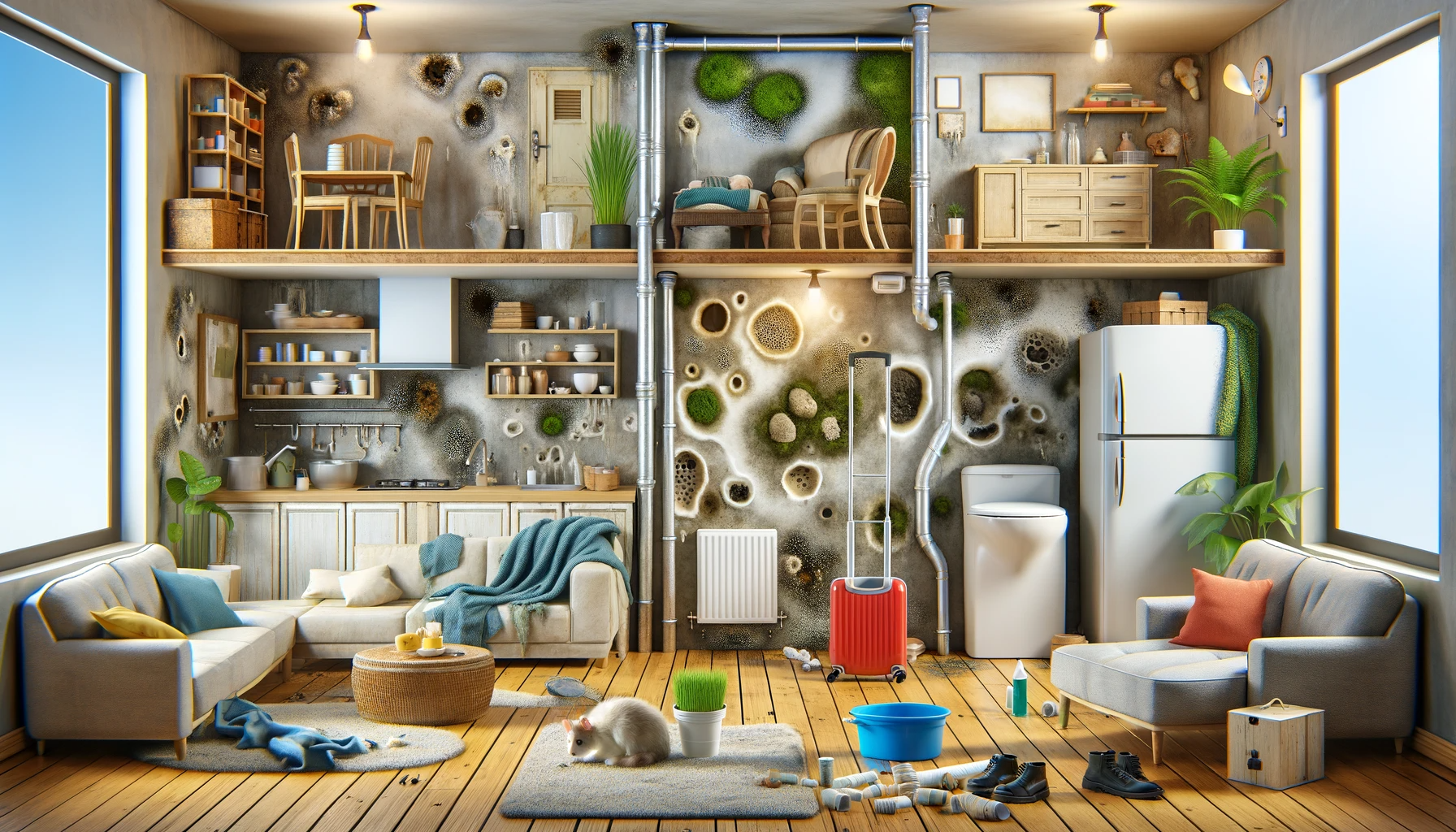Mold in your Home
Mold. You know it’s there but don’t want to think about it. It’s like that creepy uncle who always shows up at family gatherings, and nobody knows why – nobody wants him there, but he won’t go away!
Unfortunately, mold is much more dangerous than an unwanted houseguest; it can cause serious health problems, including respiratory issues and asthma attacks. The good news is that you can identify and prevent mold from growing in your home, so you don’t have to worry about it invading every corner of your house.
Mold Exposure: Is this a serious health concern?
You bet it is. Mold can cause allergies, asthma attacks, respiratory issues, sinus infections, and other severe reactions. And if the mold problem gets worse, it can even lead to structural damage in your home. Some symptoms are listed below:
- Coughing
- Wheezing
- Eye irritation, such as redness or watery eyes
- Skin irritation, such as a rash or hives
- Nasal congestion
- Runny nose
- Itchy throat
- Difficulty breathing
- Asthma attacks
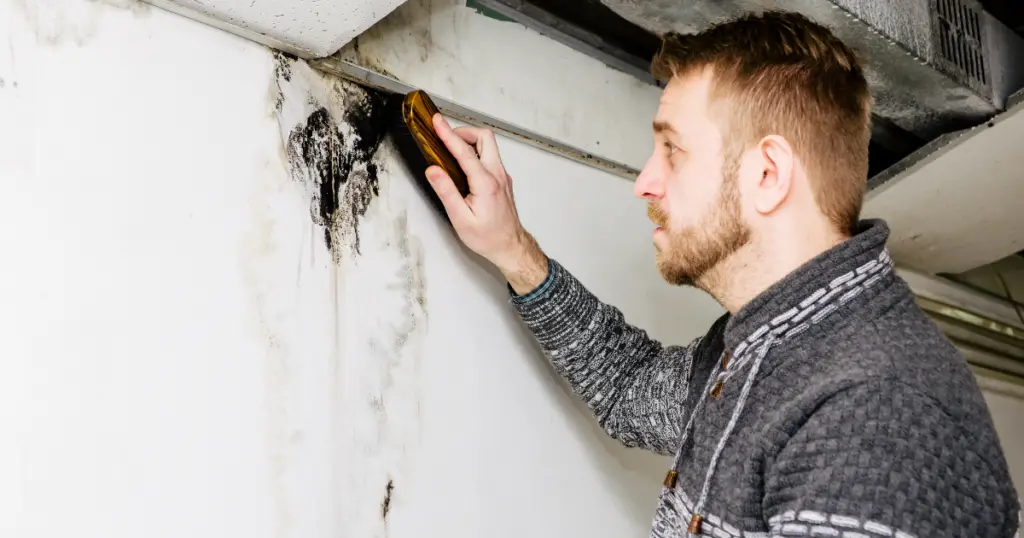
What is Mold
Mold is a type of fungus that grows on damp surfaces. It’s usually green or black, and it has a musty smell.
Common Types of Mold in the House
Many different types of mold can grow in the home, and they can vary in appearance and behavior depending on the specific species and the conditions in which they are growing. Here are listed the most common indoor molds that you might find in the home, along with some of their characteristics:
- Aspergillus: This is a common mold in various colors, including black, brown, and green. It is often found in food, but it can also grow on walls and other surfaces in the home. Some species of Aspergillus can produce toxins that can be harmful to humans.
- Cladosporium: This mold is often found in damp or humid environments and can appear as a dark green or brownish-black growth on surfaces. It is commonly found on wood, paper, and textiles.
- Penicillium: This mold is often blue or green and has a furry or velvety appearance. It is commonly found in food, but it can also grow on walls and other surfaces in the home. Some species of Penicillium produce toxins that can be harmful to humans.
- Stachybotrys: This is a type of mold commonly referred to as “black mold” due to its dark color. It is often found in damp or water-damaged buildings, and it can produce toxins that can be harmful to humans.
- Alternaria: This mold is often found on damp surfaces, and it can appear as a dark brown or black growth. It is commonly found on windowsills and shower curtains and can cause allergic reactions in some people.
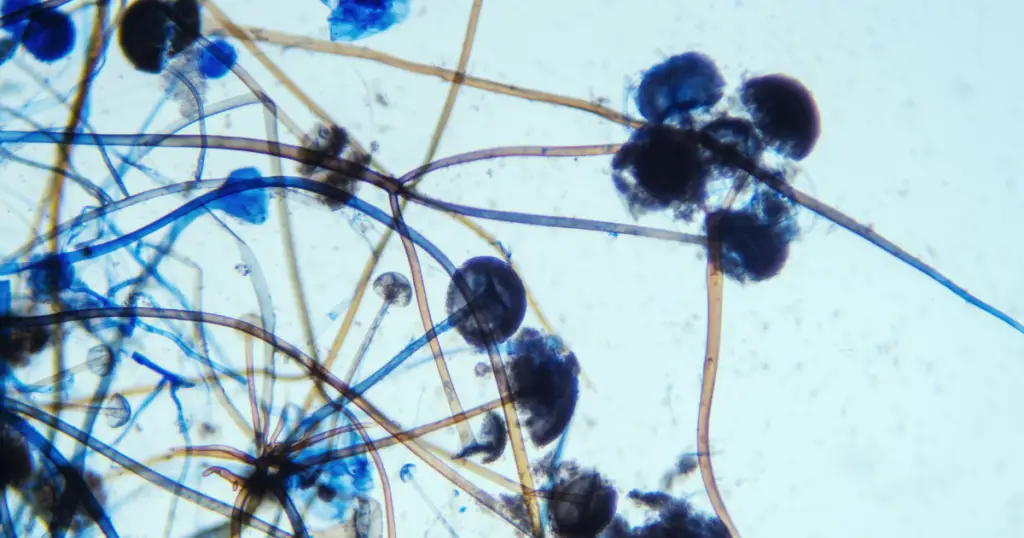
Mold Spores are Everywhere
Mold spores are tiny pieces of mold that can float around in the air. They are already everywhere, but they will not cause problems unless they find a wet place to grow. If you keep your home dry and clean, the mold spores will stay inert and not cause any health issues.
Mold spores are so prevalent they can be found in operating cleanrooms!
The Problem with Mold Growth
When rapid mold growth occurs, that is when mold exposure can lead to health effects. apid mold growth can present several problems for the health and structure of a home. Some types of mold produce toxins that can cause respiratory problems and allergic reactions in humans, and rapid mold growth can increase the amount of these toxins in the air.
Mold can also weaken wood and drywall and contribute to the deterioration of other building materials. When mold proliferates, removing it can be harder and require more extensive and costly repairs. Additionally, rapid mold growth can make it more challenging to identify the cause of the problem, such as a leaky pipe or high humidity levels.
How Mold Growth can Happen
Mold growth can occur in any damp, dark, and warm environment. This is because mold spores need specific conditions to thrive.
These conditions include a temperature between 68 and 86 degrees Fahrenheit, relative humidity above 60%, and organic materials such as wood or paper, which provide nutrients for the fungus.
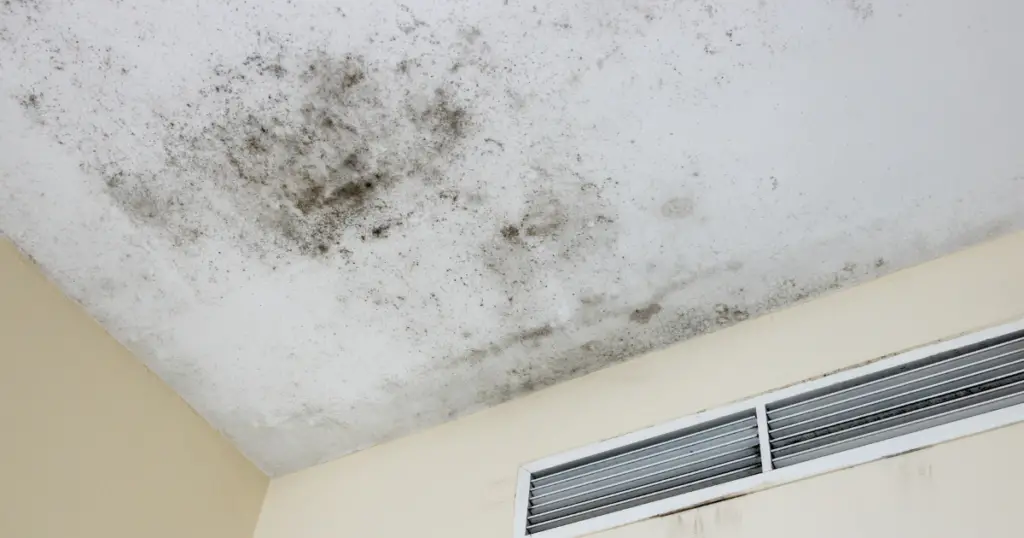
Where to look for mold
Mold can grow in any area of the home that is damp or humid and have a food source. Some of the most common areas where you can find mold are:
- Bathrooms: Mold can often be found in bathrooms, particularly on shower curtains, tiles, and grout.
- Basements: Basements are often damp and poorly ventilated, so they can be prone to mold growth. Look for mold on walls, floors, and ceilings.
- Kitchens: Mold can sometimes be found under sinks, around appliances (like refrigerators), and on surfaces exposed to moisture, like countertops.
- Attics: Mold can grow in attics if there is a leak in the roof or poor ventilation. Look for black or green spots on rafters, insulation, or wood.
- Laundry rooms: Mold can grow on washing machines, dryers, and pipes if they are exposed to moisture.
- Crawlspaces: There are many porous materials, and it is an area rarely inspected.
You’re looking for the conditions for rapid mold growth
When looking for a mold problem, you should focus on spotting the conditions for rapid mold growth to catch it before there is visible mold. This includes checking for areas of the home that are damp, have high humidity, or collect condensation. You want to look for areas of water intrusion or water damage.
Some less obvious places to look include ceiling tiles, air conditioning drip pans, and drain lines. You also want to ensure your home has proper ventilation and does not retain too much moisture. Sometimes crawlspaces or basements have installed exhaust fans that you will need to run to prevent excessive moisture.
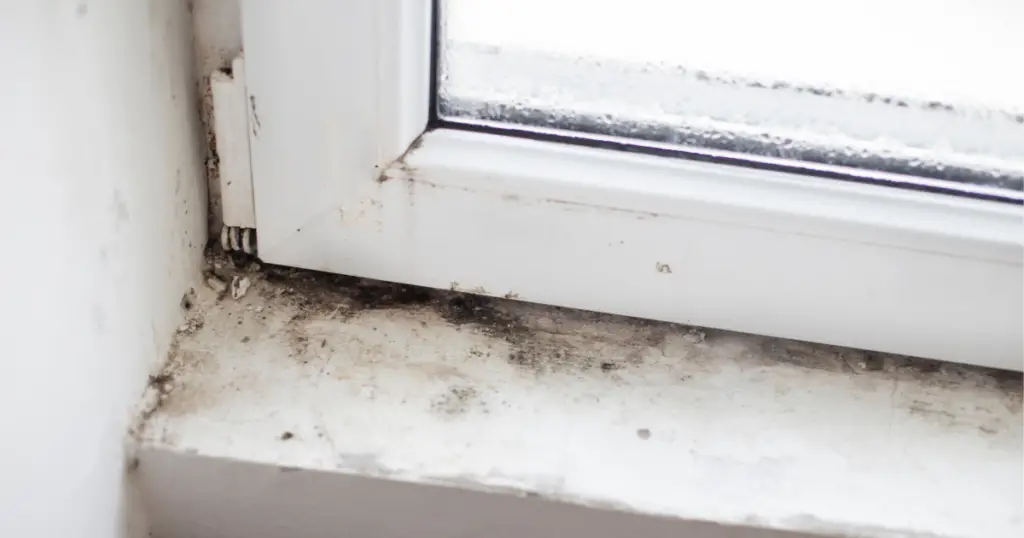
What to do if you suspect mold growth
If you suspect mold growth in your home, it is essential to take action right away. Mold can cause serious health issues and damage the structure of your home over time.
Contact A Professional
It’s almost always a good idea to contact a professional when you have mold in your home. They have experience with how to control mold growth and mold cleanup.
A professional can help you to identify the source of moisture or plumbing leaks and determine the best course of action for mold remediation.
The process is usually similar whether you are working with a professional or going the DIY route.
Identify the affected areas.
First, you’ll need to identify the location of the mold growth and how far it has spread. This will help you determine the extent of the damage. Most of the time, the inspection process will involve cutting holes in drywall and lifting carpet and ceiling tiles.
This is one area that a professional will have some significant advantages since they will have tools that will allow them to identify the source of moisture and assess the extent of mold growth quickly and accurately. They will have moisture meters and inspection gear.
They also have the proper PPE (Personal Protective Equipment) like rubber gloves, respirators (to avoid toxic fumes), and body coveralls.
Finally, a professional will have the experience to identify common indoor molds rapidly.
Contain the Area
Affected areas should be contained. This will limit growing mold from spreading to other areas of your home. This will also trap the moisture problem in a single area and reduce the risk factors for further health concerns.
Containments are usually built with plastic sheeting stapled to the walls and ceilings. Once staples, all edges, and seams should be taped. You will also need to seal off any airways, like doorways or vents, with plastic sheeting.
Remove affected items
Next, you’ll want to remove any items affected by mold growth. This includes furniture, carpets, wallpaper, and other porous materials. Most of this material will need to be disposed of if the damage is too extensive.
Fix what allowed the rapid growth conditions
Once you have removed the affected material, it is time to fix what allowed the mold growth to begin with. This usually involves finding and fixing any plumbing issues, repairing the roof or windows that leaked, addressing inadequate ventilation, and using a dehumidifier in high-humidity areas of the home.
Remove Damaged Material
Once the source of moisture is fixed, and the affected areas have been contained, it’s time to remove all damaged materials. This includes drywall, insulation, carpets, padding, and other items that cannot be salvaged or reused.
Clean
Clean all the surfaces of your home with a non-toxic cleaning solution. This will help to remove dirt and any remaining mold spores from the affected areas. You must use the proper protective gear, like gloves and respirators, when cleaning these surfaces.
Disinfect
Use bleach or hydrogen peroxide to disinfect all the surfaces of your home. This will help to kill any remaining mold spores and help prevent future growth. It’s important to use caution when using chemicals like these, as they can be hazardous.
Repair
Finally, you will need to restore the area that was affected by mold. This could include replacing drywall and insulation, putting down new flooring or carpeting, and repainting walls and ceilings. Again, proper protective gear should be worn when dealing with mold-infested materials, as they can be hazardous to your health.
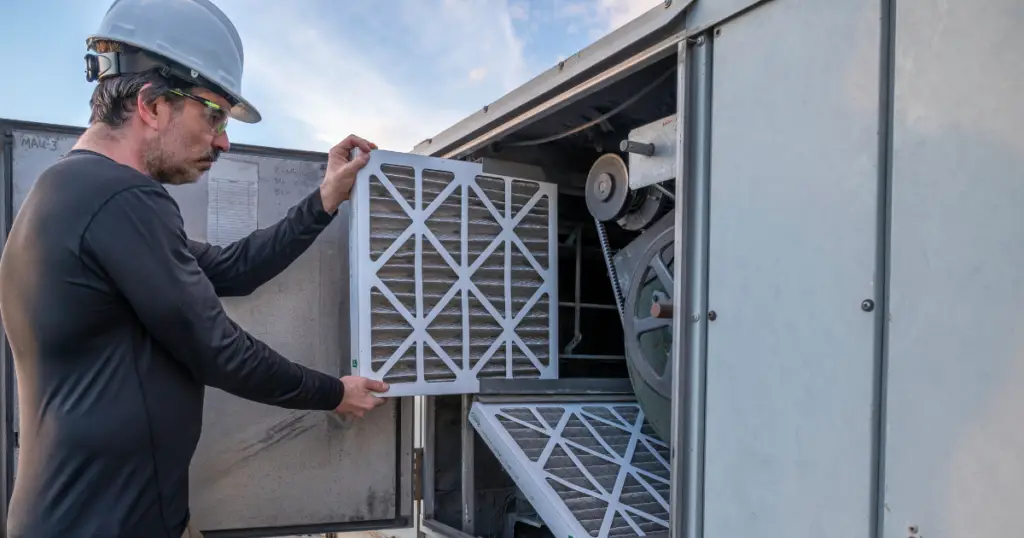
Strategies to Prevent Mold Growth
Mold growth can be a nuisance in the home, but fortunately, there are lots of strategies you can take to help keep it at bay.
These include installing an air conditioner, opening windows to allow fresh air to circulate, checking for any signs of indoor mold growth, taking extra precautionary measures if someone in your household suffers from a mold allergy, cleaning hard surfaces regularly and inspecting your basement floor for any leaks or water seepage that could promote organic material decay resulting in mold growth.
What can produce moisture?
Indoor moisture can be produced by day-to-day activities like cooking, showering, and laundry. Other sources of moisture can also be leaks in pipes or roofs that go unnoticed for long periods, high relative humidity levels due to lack of air circulation and poor ventilation, water seepage through the basement floor, condensation on cold surfaces like windows and walls, etcetera.
Household mold can also be caused by some habits like drying clothes inside (damp towels, wet clothing). Mold also needs suitable nutrients, such as dirt or dust particles, to grow and spread. Air conditioners can help reduce indoor humidity levels and prevent household mold growth. Poor ventilation in a room or house can also contribute to higher humidity levels favorable for mold to grow.
How to remove moisture?
Controlling the moisture level in your home is essential to preventing mold growth. Fortunately, you can try a few procedures to reduce the likelihood of excess moisture accumulation. These include opening windows for air circulation, controlling air temperature, reducing exposure to mold sources, and installing dehumidifiers or air conditioners. Here’s a list of procedures to help remove moisture from your home:
- Open windows regularly to allow air to flow through and reduce humidity levels in your home.
- Control the temperature in your home by turning off fans and other temperature-controlling appliances when not in use as this helps prevent overheating.
- Reduce exposure to potential mold sources such as damp towels, wet clothing and other sources of moisture.
- Install dehumidifiers or air conditioners to help lower indoor humidity levels even further and make it less hospitable for mold growth.
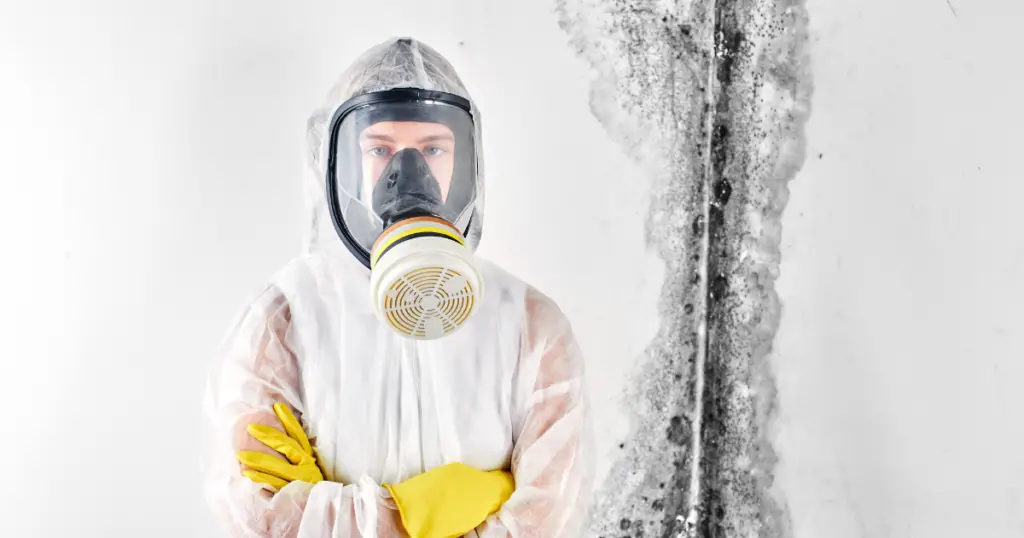
Final Considerations
If you are dealing with mold in your home, it is important to consider the potential health risks that come with mold.
Mold allergies can be triggered by living in an environment where there is a lot of mold growing. If you start to smell mold or notice any signs of dampness or wet spots, it is important to act quickly and take measures to decrease the moisture levels in your home.
If the problem persists, it might be best to seek professional help from a certified mold remediator as they can help identify and remove all sources of mold growth.
[/et_pb_text][/et_pb_column][/et_pb_row][/et_pb_section]
